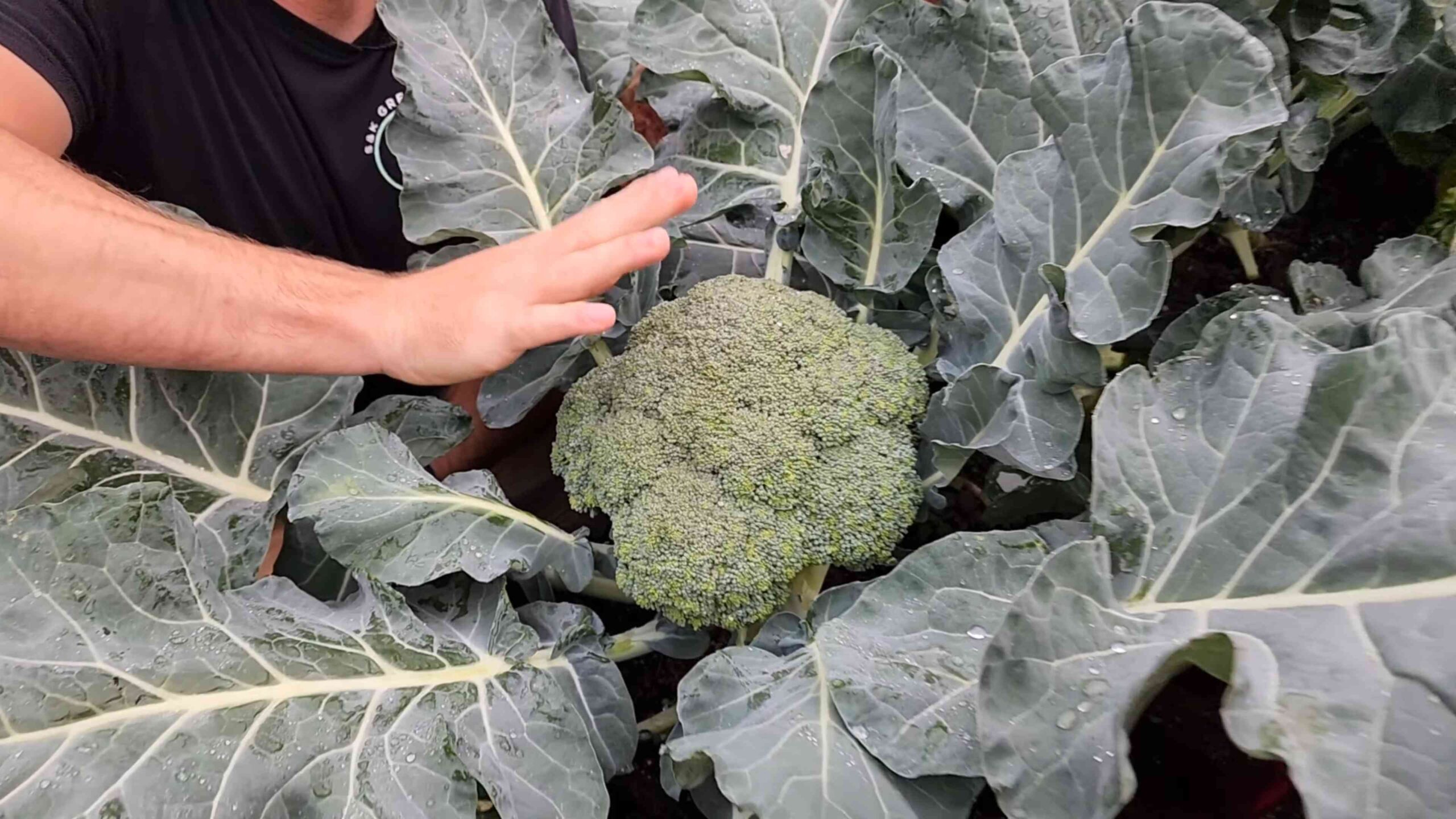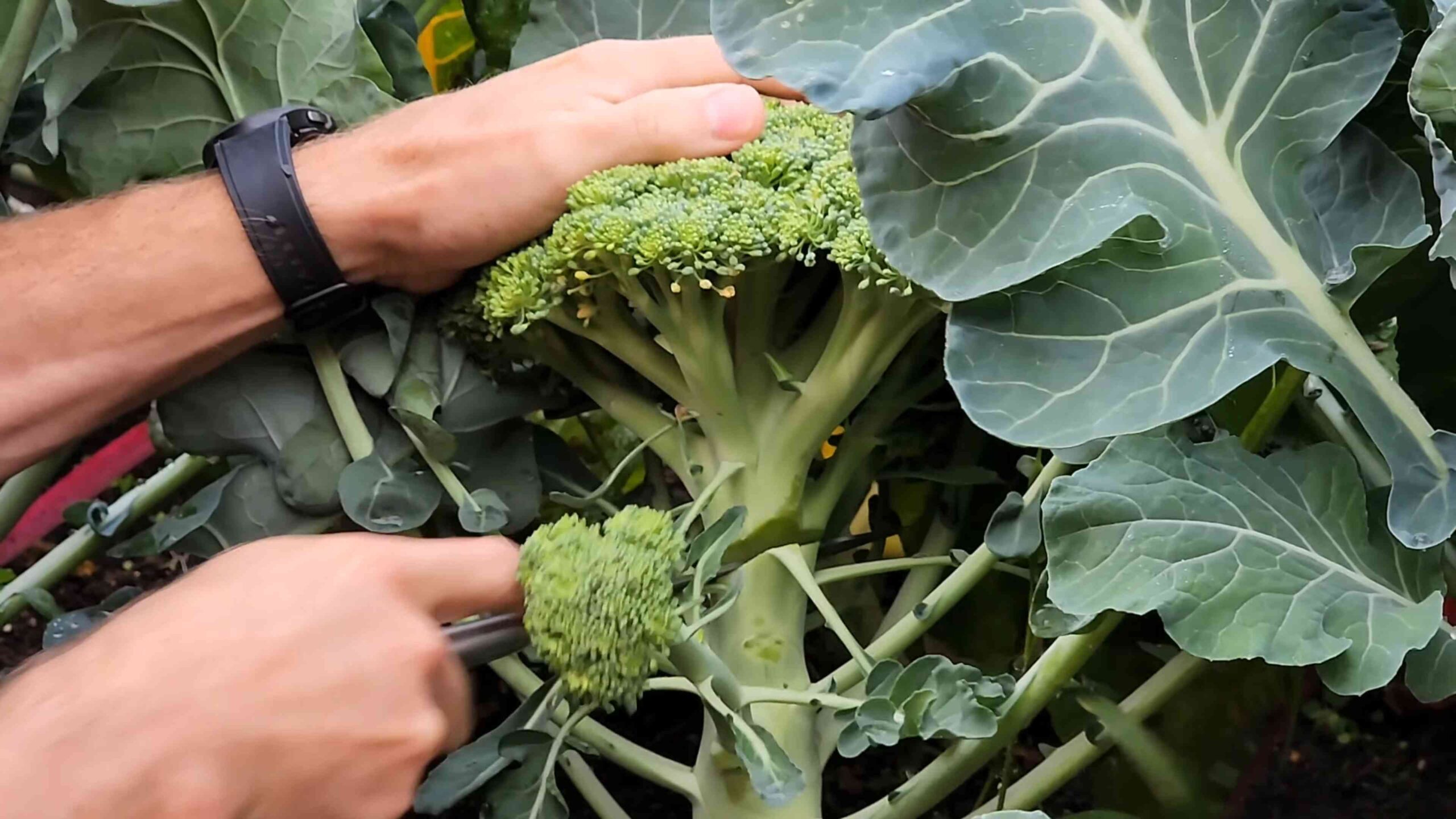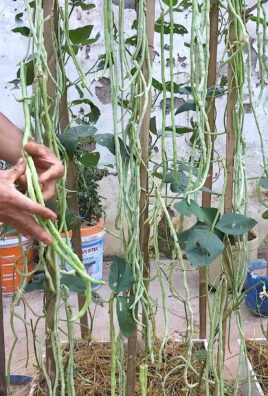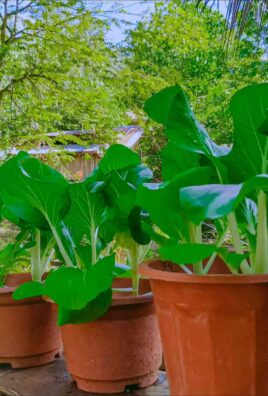Grow Broccoli at Home, you say? Absolutely! Imagine stepping into your backyard and harvesting crisp, vibrant broccoli heads, bursting with flavor and freshness. Forget those bland, overpriced supermarket florets – with a few simple tricks and a little DIY spirit, you can cultivate your own broccoli bounty right in your own backyard.
Broccoli, a member of the brassica family, has a rich history dating back to ancient Rome, where it was prized for its nutritional value and unique taste. Over centuries, it has spread across the globe, becoming a staple in countless cuisines. But why settle for store-bought when you can experience the unparalleled satisfaction of growing your own?
In today’s world, where healthy eating and sustainable living are more important than ever, learning to grow broccoli at home offers a fantastic way to connect with nature, reduce your carbon footprint, and enjoy delicious, homegrown produce. Plus, let’s be honest, there’s something incredibly rewarding about nurturing a plant from seed to table. This DIY guide will equip you with all the essential tips and tricks to successfully cultivate broccoli in your home garden, regardless of your experience level. So, grab your gardening gloves, and let’s get started on this exciting journey together!

Growing Broccoli at Home: A Beginner’s Guide
Hey there, fellow gardening enthusiasts! I’m so excited to share my experience with growing broccoli at home. It’s surprisingly easier than you might think, and the taste of homegrown broccoli is simply unbeatable. Forget those bland supermarket florets – get ready for some seriously delicious and nutritious veggies straight from your backyard (or balcony!).
Choosing Your Broccoli Variety
Before we dive into the nitty-gritty, let’s talk about broccoli varieties. There are tons to choose from, each with its own unique characteristics. Here are a few of my favorites:
* Calabrese: This is the classic broccoli variety you’re probably most familiar with. It produces a large, central head and is relatively easy to grow.
* Waltham 29: A reliable and cold-hardy variety, perfect for those of us in cooler climates. It produces medium-sized heads.
* Di Cicco: This variety is known for its early maturity and production of smaller, side shoots after the main head is harvested. This means you get a longer harvest period!
* Romanesco: If you’re feeling adventurous, try growing Romanesco broccoli. Its fractal-like head is a real showstopper, and the flavor is mild and nutty.
* Sprouting Broccoli: Unlike the other varieties that produce a single large head, sprouting broccoli produces numerous smaller shoots. It’s great for stir-fries and salads.
Consider your climate and growing space when choosing a variety. Some varieties are better suited for specific regions or growing conditions.
Starting Your Broccoli Seeds
You have two options here: starting your seeds indoors or directly sowing them in the garden. I personally prefer starting indoors, as it gives the seedlings a head start and protects them from pests and harsh weather.
Starting Seeds Indoors
1. Gather Your Supplies: You’ll need seed starting trays or small pots, seed starting mix (not regular potting soil!), broccoli seeds, a spray bottle, and a grow light (optional, but highly recommended).
2. Sow the Seeds: Fill your trays or pots with seed starting mix. Moisten the mix thoroughly with the spray bottle. Sow 2-3 broccoli seeds per cell or pot, about ¼ inch deep.
3. Provide Light and Warmth: Place the trays or pots in a warm location (around 70-75°F) and under a grow light if you have one. If you don’t have a grow light, a sunny windowsill will do, but be sure to rotate the trays regularly to prevent the seedlings from leaning towards the light.
4. Keep the Soil Moist: Water the seedlings regularly, keeping the soil consistently moist but not soggy. Use a spray bottle to avoid disturbing the delicate seedlings.
5. Thin the Seedlings: Once the seedlings have developed their first true leaves (the leaves that look like miniature broccoli leaves), thin them to one seedling per cell or pot. Snip off the weaker seedlings at the soil line with scissors. Don’t try to pull them out, as you might damage the roots of the remaining seedling.
6. Harden Off the Seedlings: About a week before you plan to transplant the seedlings outdoors, you’ll need to “harden them off.” This process gradually acclimates the seedlings to outdoor conditions. Start by placing the trays or pots outdoors in a sheltered location for a few hours each day, gradually increasing the amount of time they spend outside. Protect them from direct sunlight and strong winds.
Direct Sowing Seeds
1. Prepare the Soil: Choose a sunny location with well-drained soil. Amend the soil with compost or other organic matter to improve its fertility and drainage.
2. Sow the Seeds: Sow the broccoli seeds directly into the soil, about ¼ inch deep and spaced according to the variety’s recommendations (usually 18-24 inches apart).
3. Water Regularly: Keep the soil consistently moist until the seeds germinate.
4. Thin the Seedlings: Once the seedlings have emerged and have a few true leaves, thin them to the strongest seedling per space.
Transplanting Broccoli Seedlings
Once your seedlings are about 4-6 weeks old and have been hardened off, it’s time to transplant them into the garden.
1. Prepare the Planting Site: Choose a sunny location with well-drained soil. Broccoli needs at least 6 hours of sunlight per day. Amend the soil with compost or other organic matter.
2. Dig Holes: Dig holes that are slightly larger than the root balls of the seedlings, spacing them 18-24 inches apart.
3. Transplant the Seedlings: Gently remove the seedlings from their trays or pots. Loosen the roots slightly and place the seedlings in the holes. Backfill with soil and gently firm around the base of the plants.
4. Water Thoroughly: Water the newly transplanted seedlings thoroughly.
5. Mulch: Apply a layer of mulch around the plants to help retain moisture, suppress weeds, and regulate soil temperature. I like to use straw or shredded leaves.
Caring for Your Broccoli Plants
Now that your broccoli plants are in the ground, it’s time to provide them with the care they need to thrive.
1. Watering: Broccoli needs consistent moisture, especially during head formation. Water deeply and regularly, especially during dry spells. Aim for about 1-1.5 inches of water per week.
2. Fertilizing: Broccoli is a heavy feeder, so it needs regular fertilization. Apply a balanced fertilizer every 2-3 weeks, following the package instructions. You can also side-dress the plants with compost or aged manure.
3. Weeding: Keep the area around your broccoli plants free of weeds. Weeds compete with the broccoli for nutrients and water.
4. Pest Control: Broccoli is susceptible to several pests, including cabbage worms, aphids, and flea beetles. Regularly inspect your plants for signs of pests and take action promptly.
* Cabbage Worms: These green caterpillars can quickly devour broccoli leaves. Handpick them off the plants or use Bacillus thuringiensis (Bt), a natural insecticide.
* Aphids: These tiny insects suck the sap from plants. Spray them off with a strong stream of water or use insecticidal soap.
* Flea Beetles: These tiny beetles jump when disturbed and can create small holes in the leaves. Cover your plants with row covers to prevent them from reaching the plants.
5. Disease Control: Broccoli can also be affected by diseases such as black rot and clubroot.
* Black Rot: This bacterial disease causes yellowing and browning of the leaves. Prevent black rot by planting disease-resistant varieties and practicing crop rotation.
* Clubroot: This fungal disease causes swollen and distorted roots. Prevent clubroot by liming the soil to raise the pH and practicing crop rotation.
Harvesting Your Broccoli
The moment you’ve been waiting for! Harvesting your broccoli is the most rewarding part of the process.
1. Timing is Key: Harvest your broccoli when the head is firm and the florets are tightly closed. If the florets start to open and turn yellow, it’s time to harvest immediately.
2. Cut the Head: Use a sharp knife to cut the main head from the plant, leaving a few inches of stem.
3. Encourage Side Shoots: After harvesting the main head, the plant will often produce smaller side shoots. Continue to water and fertilize the plant to encourage these side shoots to develop.
4. Enjoy Your Harvest: Freshly harvested broccoli is best enjoyed immediately. You can eat it raw, steamed, roasted, or stir-fried.
Troubleshooting
Even with the best care, you might encounter some challenges when growing broccoli. Here are a few common problems and how to address them:
* Small Heads: Small heads can be caused by insufficient sunlight, poor soil fertility, or inadequate watering. Make sure your plants are getting at least 6 hours of sunlight per day, fertilize regularly, and water deeply.
* Bolting: Bolting (premature flowering) can be caused by hot weather or stress. Choose heat-tolerant varieties and provide shade during the hottest part of the day.
* Pest Infestations: Regularly inspect your plants for pests and take action promptly. Use organic pest control methods whenever possible.
* Disease Problems: Choose disease-resistant varieties and practice crop rotation to prevent disease problems.
Extending Your Broccoli Season
Want to enjoy fresh broccoli for as long as possible? Here are a few tips for extending your broccoli season:
* Succession Planting: Plant broccoli seeds every few weeks to ensure a continuous harvest.
* Fall Planting: In many regions, you can plant broccoli in the fall for a winter or early spring harvest.
* Cold Frames or Greenhouses: Use cold frames or greenhouses to protect your broccoli plants from frost and extend the growing season.
Growing broccoli at

Conclusion
So, there you have it! Growing broccoli at home isn’t just a gardening project; it’s an investment in your health, your taste buds, and your connection to the natural world. We’ve walked through the steps, from selecting the right seeds to harvesting those beautiful, nutrient-packed heads. And while it might seem daunting at first, the rewards – fresh, flavorful broccoli right from your backyard – are absolutely worth the effort.
Why is this DIY trick a must-try? Because store-bought broccoli simply can’t compare to the vibrant taste and texture of homegrown. You control the growing conditions, ensuring your broccoli is free from unwanted pesticides and herbicides. Plus, the satisfaction of nurturing a plant from seed to table is an experience that’s hard to beat. It’s a sustainable way to enjoy one of the healthiest vegetables on the planet.
But don’t stop there! Experiment with different varieties of broccoli. Try sprouting broccoli for a quicker harvest and a more delicate flavor. Or, if you’re feeling adventurous, explore growing purple sprouting broccoli for a visually stunning and equally delicious addition to your meals. Consider companion planting with herbs like rosemary or thyme to deter pests naturally and enhance the flavor of your broccoli. You can even try succession planting, sowing new seeds every few weeks, to ensure a continuous supply of fresh broccoli throughout the growing season. Another variation is to grow broccoli in containers if you have limited space. Choose a large container with good drainage and follow the same growing instructions as you would for in-ground planting.
Growing broccoli at home is a journey of discovery, and we encourage you to embark on it! Don’t be afraid to make mistakes – that’s how we learn. And most importantly, have fun!
We’re confident that with a little patience and care, you’ll be enjoying delicious, homegrown broccoli in no time. So, grab your seeds, get your hands dirty, and experience the joy of growing your own food.
Now, we want to hear from you! Have you tried growing broccoli at home before? What were your successes and challenges? Share your experiences, tips, and photos in the comments below. Let’s build a community of home gardeners and inspire each other to grow more of our own food. We can’t wait to see what you create!
Frequently Asked Questions (FAQs)
1. What is the best time of year to plant broccoli?
The best time to plant broccoli depends on your climate. In general, broccoli is a cool-season crop, meaning it thrives in temperatures between 60°F and 70°F (15°C and 21°C). For spring crops, start seeds indoors 6-8 weeks before the last expected frost. Transplant seedlings outdoors 2-3 weeks before the last frost. For fall crops, start seeds indoors in mid-summer and transplant seedlings outdoors in late summer or early fall. Check your local frost dates to determine the optimal planting time for your region.
2. What kind of soil does broccoli need?
Broccoli prefers well-drained, fertile soil that is rich in organic matter. The ideal soil pH is between 6.0 and 7.0. Before planting, amend your soil with compost or well-rotted manure to improve drainage and fertility. You can also add a balanced fertilizer to provide essential nutrients. If your soil is heavy clay, consider adding sand or perlite to improve drainage.
3. How much sunlight does broccoli need?
Broccoli needs at least 6 hours of direct sunlight per day to thrive. Choose a planting location that receives full sun for the majority of the day. If you live in a hot climate, some afternoon shade can be beneficial to prevent the broccoli from bolting (going to seed prematurely).
4. How often should I water broccoli?
Broccoli needs consistent moisture to grow properly. Water deeply and regularly, especially during dry periods. Aim to keep the soil consistently moist but not waterlogged. A good rule of thumb is to water when the top inch of soil feels dry to the touch. Mulching around the plants can help retain moisture and suppress weeds.
5. What are some common pests and diseases that affect broccoli?
Broccoli is susceptible to several pests and diseases, including cabbage worms, aphids, flea beetles, clubroot, and downy mildew. To prevent pest problems, consider using row covers to protect your plants. You can also handpick pests off the plants or use insecticidal soap or neem oil. To prevent diseases, ensure good air circulation around the plants and avoid overhead watering. If you notice signs of disease, remove affected leaves and treat the plants with a fungicide if necessary.
6. How do I know when my broccoli is ready to harvest?
Broccoli is ready to harvest when the central head is firm and the florets are tightly closed. The head should be a deep green color. Use a sharp knife to cut the head from the plant, leaving a few inches of stem. After harvesting the central head, the plant will often produce smaller side shoots, which can also be harvested.
7. Can I grow broccoli in containers?
Yes, broccoli can be grown in containers, but you’ll need to choose a large container (at least 12 inches in diameter) with good drainage. Use a high-quality potting mix and follow the same growing instructions as you would for in-ground planting. Container-grown broccoli may need more frequent watering and fertilizing than broccoli grown in the ground.
8. What are some good companion plants for broccoli?
Good companion plants for broccoli include herbs like rosemary, thyme, and sage, which can help deter pests. Other beneficial companion plants include onions, garlic, and marigolds. Avoid planting broccoli near tomatoes, peppers, or strawberries, as these plants can compete for nutrients or attract pests.
9. My broccoli plant is bolting (going to seed). What should I do?
Bolting is when a plant prematurely flowers and goes to seed. This can happen if the plant is stressed by heat, drought, or lack of nutrients. Once a broccoli plant bolts, the head will become loose and bitter. If your broccoli plant bolts, you can still harvest the leaves and flowers for salads or stir-fries. To prevent bolting, ensure your broccoli plants receive adequate water, nutrients, and protection from extreme temperatures.
10. How can I store harvested broccoli?
To store harvested broccoli, wrap it loosely in a damp paper towel and place it in a plastic bag in the refrigerator. Broccoli can be stored in the refrigerator for up to a week. You can also freeze broccoli for longer storage. To freeze broccoli, blanch it in boiling water for 3-5 minutes, then plunge it into ice water to stop the cooking process. Drain the broccoli and spread it out on a baking sheet to freeze. Once frozen, transfer the broccoli to a freezer bag or container. Frozen broccoli can be stored for up to 8 months.





Leave a Comment